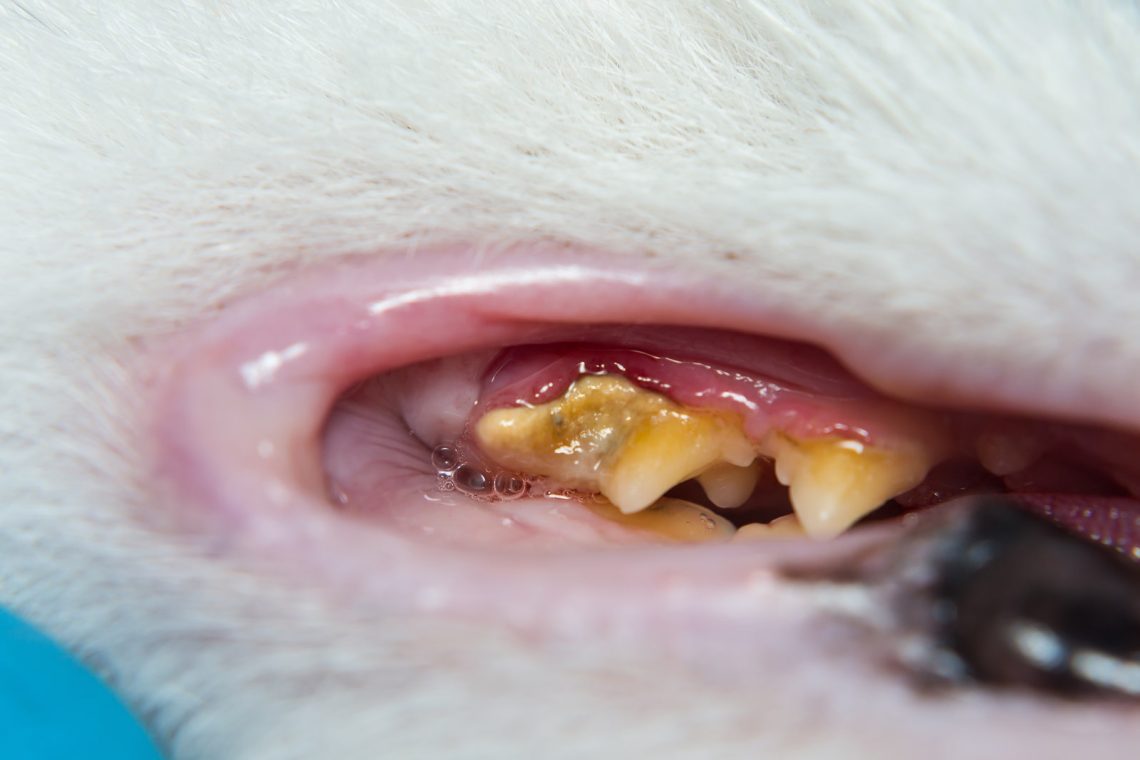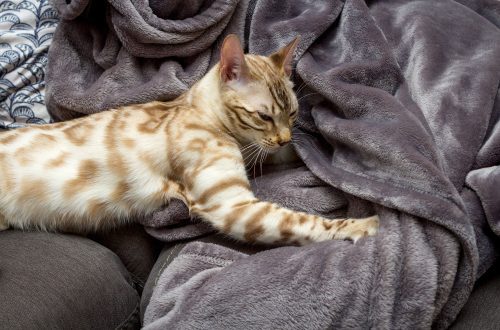
Gingivitis and gum disease in cats: symptoms and treatment
Gingivitis in cats is a common form of oral disease. It occurs in them as often as in dogs or in humans. But inflammation of the gums in cats, unlike gingivitis in humans, is not just swelling and bleeding of the gums. In some cases, it can even be life-threatening.
Due to the prevalence of the disease, as well as the potential complexity of its course and severity of consequences, it is important for owners to know the causes of gingivitis in cats, the signs and basic methods of prevention and treatment.
Contents
What is gingivitis
Gingivitis is inflammation of the gums. It mainly develops in older cats as a result of a large accumulation of plaque and the reaction of the gums to it in the form of swelling, redness, bleeding and hypersensitivity.
Plaque is a collection of bacteria that, when combined with substances present in the mouth, harden and turn into calculus on the tooth. Plaque leads to swelling of the gums and the periodontal ligament, the structure that attaches the teeth to the bone.
The reaction of the periodontal ligament to plaque in the form of swelling and destruction leads to the development of a disease called periodontitis. The reaction from the gums leads to gingivitis. The names of these diseases are often incorrectly interchanged, so it is important to distinguish them from each other.
Causes of gum disease in cats
Most cats develop gingivitis due to the gradual accumulation of plaque, a process that occurs in pets as they age. In different cats, the gums can react to plaque in completely different ways. Some people accumulate a lot of plaque with a mild form of gingivitis, while others have gums that react more strongly.
The degree of gingivitis in an individual cat is largely determined by genetics, but other factors can also influence the development of this disease, including:
- Infectious diseases. Feline leukemia virus and feline immunodeficiency virus are the most common infectious diseases that can lead to gingivitis.
- Tooth resorption. Caries-like lesions can cause gingivitis around affected teeth.
- Gingivitis at an early age. During teething, pets usually experience mild gingivitis, but severe forms can develop after the molars have erupted.
- Fractures of teeth. Gingivitis can be caused by trauma.
- Malocclusion. Gingivitis can be caused by misaligned teeth and other orthodontic anomalies.
- Eosinophilic granuloma complex. It is an inflammatory disease that affects the lips, gums, tongue and therefore nearby teeth.
- Gingival hyperplasia. Although this gum growth is less common in cats than in dogs, it leads to gingivitis in both.
- Gingivostomatitis. It occurs due to an overreaction of the gums and surrounding oral tissues to dental tissues and plaque. Gingivostomatitis can cause severe pain, and sometimes cats with the condition cannot eat or drink. Stomatitis in cats, which is a chronic form of gingivitis, can take quite serious forms that require complete extraction of teeth.
Gingivitis in cats: symptoms
The main symptoms of stomatitis and gingivitis in cats are redness and bleeding along the gum line. Pets with a more severe course of the disease may experience pain in the oral cavity. Symptoms that a cat may show if she is in pain:
- profuse salivation;
- • does not want to eat and/or drink;
- sits in front of a bowl of food or water;
- eats carelessly or on one side of the mouth;
- meows or howls while eating;
- Hudeet.
- Some pets, even when suffering severely, show very slight signs of pain. It is essential to take your cat regularly for medical checkups and, if necessary, professional dental cleanings for a thorough oral and dental examination.
Gingivitis in cats: treatment
The main goal of treating gingivitis is to eliminate plaque. Regular professional teeth cleaning under anesthesia usually helps to get rid of it. It is recommended to carry out such cleaning at least once a year or, in exceptional cases, even more frequently. Veterinary dentists with additional specialized education who can perform more complex examinations or oral surgery do not recommend performing dental procedures without anesthesia. In more severe cases of gingivitis in a cat, the treatment regimen may change. The specialist usually uses one or more of the following methods:
- antibiotic therapy;
- anti-inflammatory drugs;
- extraction of teeth, including complete extraction in cats with severe forms of gingivostomatitis;
- gingivectomy – removal of part of the gum;
- stem cell therapy.
The effectiveness of laser therapy, which was previously considered promising, is still not proven.
Prevention of gingivitis in cats
Plaque control is by far the most effective way to prevent gingivitis in most cats. To do this, you need to brush your pet’s teeth every day. Special water additives, chlorhexidine mouth rinses, and anti-plaque products are less effective, but still have some effectiveness. They must be selected by a veterinarian.
Research has not yet proven that gingivitis in cats can be prevented by feeding only dry food. However, when combined with regular brushing, specially formulated dental products for cats have been shown to be effective in reducing plaque buildup and preventing gingivitis. Your veterinarian can talk about VOHC (Veterinary Oral Health Council) approved foods that help in reducing tartar and plaque in cats. For example, from the Hill’s line, these are Hill’s Prescription Diet t/d for cats and Hill’s Science Plan Oral Care for cats.
If the pet has already been diagnosed with gingivitis, the choice of wet food will be preferable for the convenience of the pet. In any case, to choose a food, you should contact your treating veterinarian, who will be able to recommend a diet in accordance with the current state of the oral cavity and the health of your cat. When combined with regular dental care, regular veterinary visits, and daily brushing, gingivitis can be successfully treated in most cats.
See also:
How to understand that a cat has a toothache, and what to expect from dental extractions in cats
Cat oral care: brushing teeth and proper nutrition
How to keep your cat’s teeth healthy at home
Causes and signs of dental disease in cats
How to brush your cat’s teeth at home?
Cat dental care at home





